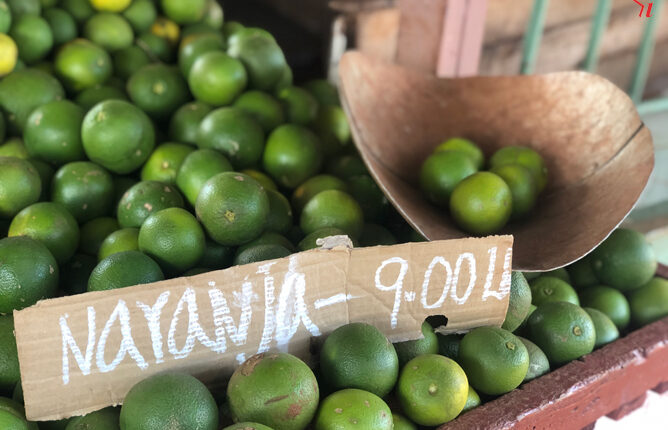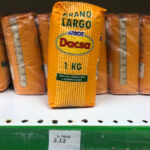
Inflated prices on account of inflation
Even now that the Cuban Parliament has revealed the inflationary prices we face, it’s hard to understand certain dynamics. The least they’ve achieved is creating doubts and, the most, worries. Because if we assume that there is an excess supply of money that circulates, it is polarized — with amounts that favor a minority, but there are a lack of goods and products to capture it — the forecast is very sad for the pockets of the majority and promising for the booming speculation sector. The one who lives off inflation, inflating, especially in Ciego de Ávila.
Two macro figures could summarize the causes: the retail mercantile circulation has a supply deficit that is estimated at 60 billion pesos and, at the same time, 92 percent of the population’s income that should be collected for there to be monetary balance, only 67 percent is being seized. Therein lies the imbalance, as Marino Murillo Jorge, head of the Permanent Commission for the Implementation and Development of the Guidelines, explained to the National Assembly of People’s Power.
But that’s only part of the imbalance. The other is due to the impossibility of reversing this trend in the midst of a period in which more than 3 billion dollars have not been entered — as Alejandro Gil Fernández, deputy prime minister and head of Economy and Planning, pointed out — and we have not had the vital “push” that tourism provides. How then do we break the paradox of the inflationary circle in which there is money left over — because we have no goods in order to collect it — and we have no goods to collect them because there is no money to produce these goods.
We are facing almost the same dilemma that productivity and wages will have us face. Except that when wages rose (and our self-esteem rose, believing that at last it would be given to each of us, according to our need and ability) we did not stop to think that, as long as we did not produce, happiness would last us as long as it did … , very little.
And January arrived accentuating everything and “messing it up” with a certain forecast since it was always said that there would be inflation. However, reality has surpassed the initial calculation by a loooong way, and here we are, in November, almost to the point of exploding on both sides: the informal and the formal sectors. Two closely fed markets, although the inflationary figures differ: The informal with a 6,900 percent increase; the State with a 60 percent.
A difference that says little if we agree that almost no one can live with their backs to this duality of markets, and in practice we end up facing two inflations in a single pocket. For this reason, that the wholesale market behaves according to the predictions, it could influence the macro economy that later reverses, indirectly, in salaries, state budgets and benefits. But our direct way of measuring it is in the transfer of the services and products it provides to the client. And in that transfer of numbers it seems that there is something missing.
Inflation, the order of the day
I say this thinking that a serving of white rice at the Don Ávila restaurant in Palmares costs 70 pesos. I repeat, 70 pesos, and, even though it is 240 grams, the price seems reasonable.
Even if the entity were forced to buy the product from the Tourism Importer (ITH) with their respective component in MLC, or paid 100 percent of the rice in MLC to the Cuban farmers, it still does not seem, at first glance, a logical price. Let’s add to that, if we go to the store that offers rice in MLC and we buy the MLC at 80 pesos (which is its illicit price) and we divide the pound of rice in half (230 grams), the price on the menu is still not right . And all this assuming that Palmares paid it at the retail and informal price, and not at the wholesale and official price under which it operates.
However, more inconceivable than rice is the price of avocado. A serving weighing 130 grams costs 70 pesos. If we translate that based on weight, which was what we did, we see that a medium avocado, one which costs 25 pesos on the street, at full price, is enough for three servings. In other words, on the street, 25 pesos… served at the Palmares, 210, an 800 percent increase. What if we say that that avocado came from Thailand and that ITH spent on importing it…? It’s unimaginable. There are no surreal hypotheses for Don Ávila’s or La Fonda’s salad.
But let’s go to the City Park to eat an orange, just one, at the La Roca kiosk, which belongs to a restaurant that is now the Base Business Unit. That entity can, therefore, buy directly from the producers, it does not have to wait for Gastronomy to put food on its ration card.
In that place an orange costs 7 pesos. And if you go to the Ortiz market, where after adding the profit, for 9 pesos, the price of a pound, you can eat five. They were weighed for us and we did our estimates. In the market, the orange costs about 2 pesos, in La Roca it is peeled for you and you pay 7. Five pesos of “added value.” Without a doubt, you could live by peeling oranges … and pockets.
Continuing on to the Boulevard, and at the La Americana store. We inquire about the price of a dining set, made with good taste and marabou. We then take advantage of the fact that it can also be purchased on credit and let’s add a bit to the 23,430 pesos it costs. If it seems too much, there is always the option of acquiring a chair, just one, which is worth 5,858 pesos. It is partly woven with plastic threads. (I add this last factor hoping to infer that its cost is justified because of that specific detail, right?)
Myriad examples could fill pages and pages of newspapers and illustrate different chains, forms of management or types of products … In the end, the sample, however diverse it may seem, points to an inflation that is not based solely on the devaluation of the currency or the excess currencies.
Inflation seems to be confused with speculation — imposing high prices to sustain, perhaps, an inflated workforce or the inefficiency of poor management. By the way, they could be generating profits that come out of the damage to someone else’s pocket and not from the production of new goods or from the provision of quality services. Even in the reseller’s philosophy, one has to sell high, since what will later be bought is expensive thereby unleashing a deliberate inflation, where some are winning because most are losing.
And we pay very dearly for the real increase in prices so that we also have to submit to the designs of a market that, although it should not run afoul of them due to its arbitrary nature, should not be allowed to gallop either. That would be a bad path to follow and it has already been shown that we have strayed.




